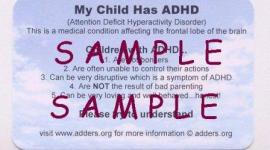Helping Your Child At Home With The Neurological Impress Method of Reading
 If you are a parent who enjoys working with your child, who finds that time spent together in academic pursuits is productive and rewarding, and if your child needs reinforcement in the area of reading, then you may wish to consider the Neurological Impress Method (N.I.M.) devised by R.G. Heckelman, PhD. This method has proved so successful it has been used by thousands of parents throughout North America. The reason for N.I.M.'s success is that it truly combines seeing/ hearing/speaking for simultaneous learning.
If you are a parent who enjoys working with your child, who finds that time spent together in academic pursuits is productive and rewarding, and if your child needs reinforcement in the area of reading, then you may wish to consider the Neurological Impress Method (N.I.M.) devised by R.G. Heckelman, PhD. This method has proved so successful it has been used by thousands of parents throughout North America. The reason for N.I.M.'s success is that it truly combines seeing/ hearing/speaking for simultaneous learning.
It is a particularly effective home method because no special training is required and the cost involved is negligible. All you need is reading material at the proper level for your child. Dr. Heckelman recommends 2-3 grade levels below the child's actual grade level. The material can be borrowed from the school or checked out at the local library.
Don't be misled by the simplicity of the N.I.M,. it works! And, it is particularly effective in the one-to-one setting of parent and child. Only fifteen minutes a day (on consecutive days) for a period of eight to twelve hours is required. Generally, positive results will occur at about the fourth hour of instruction. (If no gains have been noted by this time, there may be other interfering difficulties that are limiting the child's progress with N.I.M.)
Seat the child slightly in front of you so that your voice is close to the child's ear. Dr. Heckelman recommends that the parent sit on the right side of the child.
From the very first session, you and the child will read the same material out loud together. It is generally advisable in the beginning sessions that you read a little louder and slightly faster than the child is reading. Initially, the child may complain that he cannot keep up with you but urge him to continue and ignore any mistakes he may be making. An alternative is to slow down slightly to a more comfortable speed for the youngster. By re-reading lines or paragraphs several times together before going on to more reading material, this discomfort on the part of the child is quickly overcome. You will find that you and he will establish a comfortable rhythm in a very short time. In most cases, only two or three minutes of repetition is sufficient.
Very little preliminary instruction is necessary before the reading begins. The child is told not to think of reading since we are training him to slide his eyes across the paper. At no time is his reading corrected. As you and the child read together, move your finger simultaneously under the spoken words in a smooth continuous fashion at precisely the same speed and flow as the verbal reading. This gives the child a clear target, keeps his eyes from straying all over the page, and helps establish left-right progression.
If desired, the child may later take over the finger function. If he experiences difficulty, reach out and place your hand on his finger and guide it to a smooth flowing movement. Pay particular attention to the end of a line where the finger should move rapidly back to where the new line begins. It is common for people not to move their fingers back rapidly enough (something like a typewriter carriage returning to position at the end of a line).
Be sure that your voice and fingers are synchronized. Very good readers tend to look ahead and run their finger ahead of where their voice is. In using the N.I.M., it is absolutely essential that the finger movements, voice, and words all be synchronized.
Not only should you never correct the child's misreading of words, but at no time during the session should you stop and ask questions about word recognition or comprehension. The major concern is with style of reading rather than accuracy.
Usually, by the time it is apparent that a child needs some remedial reading, he has accumulated a number of poor reading habits and eye movements and has lost confidence, all of which produce inefficient reading pattern. He is apt to read word by word, and often that is accompanied by body rocking back and forth as he tries to force recognition and comprehension of each word as it comes along. One of the most important aspects of the N.I.M., as far as you are concerned, is to forget conventional reading approaches you may have heard of and think more in terms of exposing your child to a correct reading process.
Even after the child's reading has speeded up considerably, word recognition will probably improve somewhat more slowly. Word recognition lags behind the functional reading process by a year to a year and a half. Not to worry! Once your child has begun to read in newspapers and magazines at home voluntarily and has gained confidence in this new skill, he will make rapid strides in word recognition.
"Pacing" is another extremely important aspect of the N.I.M. Pacing means that the material should be periodically speeded up, and the youngster is literally dragged to higher rates of speed in the reading process. This is done only for a few minutes at a time, but probably should become a part of every reading session.
The material used is of extreme importance to the success of the N.I.M. As mentioned earlier, it is suggested that the child be started on material that is two to three grade levels below the child's actual grade level. But care must be taken not to spend too much time at the lower levels of the child's reading ability. Over-exposure to difficult words is far more important than under-exposure.
One of the reasons for the success of the N.I.M. seems to be the enormous exposure readers have to words. An ordinary session of N.I.M. reading, for fifteen minutes, will run as high as 2000 words! It is not at all uncommon in elementary-level books to range from 10 to 20 pages of reading material in one session. Too little exposure is more detrimental than too much. There have been no instances reported where tremendous amounts of exposure to material have been harmful to any child.
A word of caution
Care must be exercised in using the N.I.M. method that you do not try to push your child beyond his intelligence expectancy grade level. For example, if a child has approximately 100 I.Q. and is in the fifth grade, it could be assumed that he would read up to the fifth grade level. Many times this grade level can be achieved within about 8 to 12 hours of the N.I.M. if the child has started at the third grade level. If you continue on with the N.I.M. after expectancy has been achieved, very little additional gain is to be expected. However, if you wish to spend a few hours of instructional time experimenting to make certain the child has reached his optimum level, this may be well justified. It will not harm the child if you are sure not to press for results beyond his capacity.
Make it an adventure
The attitude of the parent is going to make or break the success of the reading sessions. Your approach should be cheerful not business like. For example, "Okay, we are going to read for 15 minutes. I've been looking forward to it all day." Tune out any negative signals you may receive from the child. Simply get out the materials, sit down on the couch, and pat the place next to you where you wish the child to sit. The sessions are so short and so undemanding, we can promise that the child will cooperate, especially when he begins to notice signs of improvement in his reading-and he will notice.
Don't stint on praise-but keep it honest. A pat on the head accompanied by, "Wow! You were great today," will do much to keep the level of enthusiasm high.
Do not allow any interruptions. This is your time with the child for a specific purpose and he is not going to take it seriously if you bound up to take a telephone call or answer the door. Have another adult or a sibling posted to run interference during these important fifteen minutes.
Scheduling the reading session at the same time and in the same place every day helps not only to bring organization and structure to the commitment but also places a value on it. "This is the time when Johnny and I read together but I can see you in fifteen minutes."
It should be carefully noted that not every parent is capable of working with his child on an academic level. Very simply, some parents work extremely well with their children-others find it a frustrating, exasperating experience. If you are one of the latter, waste no time on feelings of guilt, we cannot all be all things to our children. (You're probably terrific in a number of other parent-child activities.)
Parents who can work well with their children and who want to help in the academic situation often don't know what to do or how to do it. Happily, the Neurological Impress Method of Reading is one thing a parent can do with confidence and with every chance of success.
next: Improving Reading For Children and Teens
~ back to ADD Focus homepage
~ adhd library articles
~ all add/adhd articles
APA Reference
Staff, H.
(2009, January 3). Helping Your Child At Home With The Neurological Impress Method of Reading, HealthyPlace. Retrieved
on 2025, December 6 from https://www.healthyplace.com/adhd/articles/helping-your-child-at-home-with-the-neurological-impress-method-of-reading

